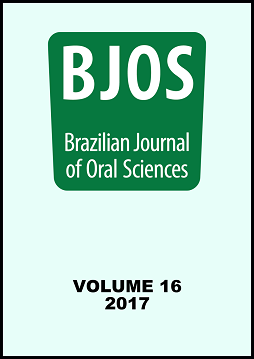Abstract
The aim of this study was to evaluate how acid-etching of the cavosurface enamel in Class I resin composite restorations influences the bond strength to the pulpal wall and the restoration, Knoop microhardness and nanoleakage after thermomechanical aging. For this research 76 fresh human molars were selected and restored with Silorane or Clearfil SEBond/Z350XT composite divided in 4 groups (Silorane system restored with or without enamel cavosurface acid-etching and Clearfil SEBond/Z350XT with or without enamel cavosurface acid-etching). To induce artificial aging, samples were subjected to thermomechanical cycling through 200,000 and thermal cycling between 5 and 55 °C with 30 second filling and 15-second drainage steps. Microhardness and microtensile bond strength were evaluated in 32 teeth (n=8) each and nanoleakage evaluation was performed in 12 teeth (n=3). Samples restored by Clearfil SEBond/Z350 XT without cavosurface acid-etching showed significantly lower microtensile bond strength results. The resin composite Z350XT presented higher values of Knoop microhardness. It was observed little or no infiltration for Silorane groups and moderate infiltration for Clearfil SE Bond groups. Acid-etching of the cavosurface enamel during restoration procedure with Clearfil Se Bond resulted in a stronger bond after thermomechanical cycling. Silorane groups showed less infiltration than Clearfil SE Bond groups.The Brazilian Journal of Oral Sciences uses the Creative Commons license (CC), thus preserving the integrity of the articles in an open access environment.
Downloads
Download data is not yet available.

